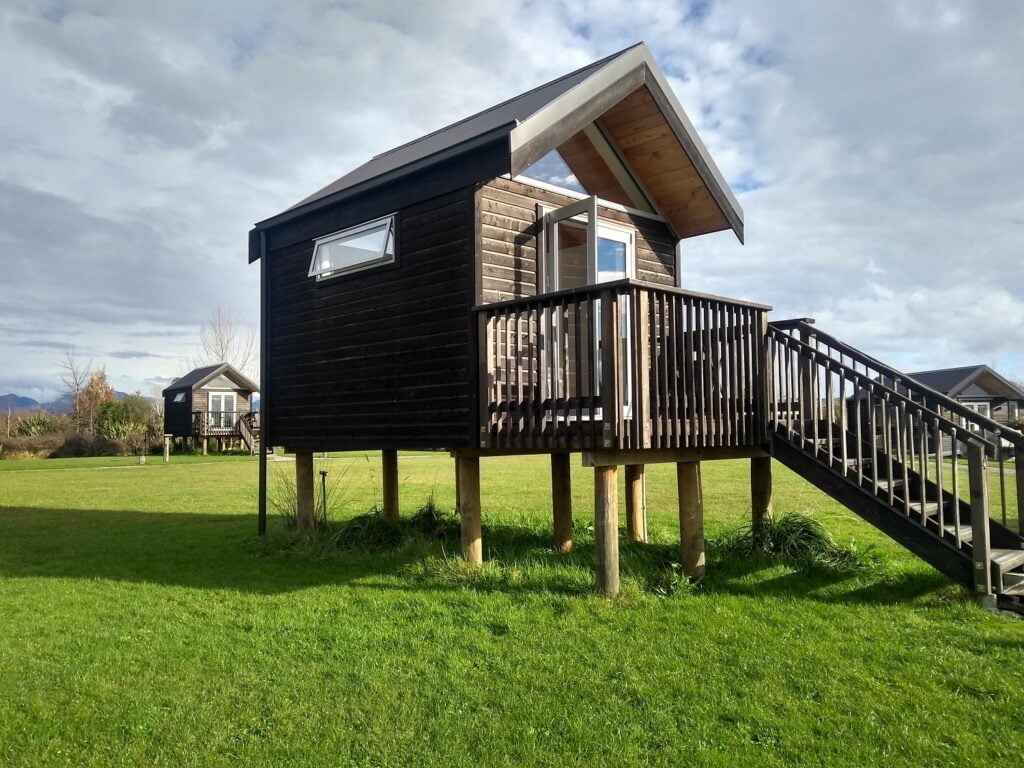By Jane Marsh
Are you one of the many people considering downsizing to a tiny home to green your footprint? If so, you’re undoubtedly driven by concerns about global warming and want to do your share, and one obvious option is to work towards compact living.
However, are tiny homes as sustainable as they seem? Going smaller will reduce overall costs, but it won’t necessarily equate to a more eco-friendly lifestyle unless you take a few additional steps. Here’s what to know.
1. Heating and Cooling Concerns
Going smaller will reduce your overall heating and cooling costs. Why? It’s a matter of square footage. Do you want to compare? You can find a handy calculator here that will let you know your cost per square foot, depending on your energy source – natural gas, propane, heating oil, or electric.
To estimate your savings, multiply your figure by the total square footage of your current home versus your desired tiny home.
In some places, like the desert southwest, you simply can’t live a modern life without air conditioning. It’s even a requirement in residential rental agreements – a detail to keep in mind if you plan on adding multiple tiny homes to your property for Airbnb purposes.
You have several options for tiny homes that cost you much less than central air for a traditional build. Select from window units, portable ACs, or a ductless mini-split – your quietest and most convenient option.
Other factors play a role, too. For example, designing your tiny home for passive solar heating can save you a bundle. Can you make your largest picture window south-facing?

2. Finding Alternative Energy Sources
If you want the ultimate in eco-friendliness for your tiny home, you should go solar. However, please don’t think your project will be as simple as throwing a few panels on the roof. A typical tiny home uses 4 KWs per day. You might use more if you work from home and rely on multiple devices to do your job.
You need roughly 15 of today’s panels to go completely off-grid, and at approximately 3 feet by 5 feet each, there isn’t enough space on your rooftop.
However, don’t despair. You can still go solar by building a separate panel grid. Although it sounds labor-intensive, this method has considerable advantages over rooftop layouts. For example, you have a much easier time removing snow from your panels if you live in a region plagued by the white stuff.
Plus, you can always supplement your heating needs with a cozy wood-burning stove that doubles as your cooktop. There’s nothing like the goodness of an off-grid scramble made from your hen’s eggs.
3. Adopting a Homestead Lifestyle
Speaking of chickens, part of what makes tiny homes as sustainable as they seem is that many who invest in them adopt a homestead lifestyle. Doing so gives you incredible freedom and independence. Imagine no longer relying on your employer for grocery cash.
One way homesteading lifestyles increase sustainability is by reducing your grocery store trips, as you grow most of what you need at home. Furthermore, it reduces soil depletion and toxic runoff by reducing or eliminating the need for chemical fertilizers and pesticides. Many homesteaders opt for natural insect control, like marigolds and ladybugs, and make compost from their organic food scraps.

4. Managing Transportation and Water Needs
Water is essential to life. Many people who build tiny homes hook into municipal water supplies, but doing so isn’t possible if you intend to go off-grid. You may need to dig a well or haul water unless you’re fortunate enough to have a running stream on your property.
Transportation is a concern, especially if you go far off the beaten path. You can produce considerable emissions if you have to travel to town. You need to get strategic.
Keep a whiteboard on your refrigerator to keep a running list of needs. Instead of making multiple trips to town, schedule one or two visits per month. Try to manage doctor appointments, school vaccination record drop-offs, and any other necessary errands in one fell swoop.
Are Tiny Homes as Sustainable as They Seem?
Are tiny houses as sustainable as they seem? It all depends on the approach you take. Reducing size will shrink your overall carbon footprint, but you still have to make additional choices for the ultimate in eco-friendliness.
Follow the tips above to make your tiny home project as sustainable as possible. With a little planning, you can minimize your carbon footprint.
Author Bio:
Jane works as the founder and editor-in-chief of Environment.co where she covers environmental news and sustainable living tips.